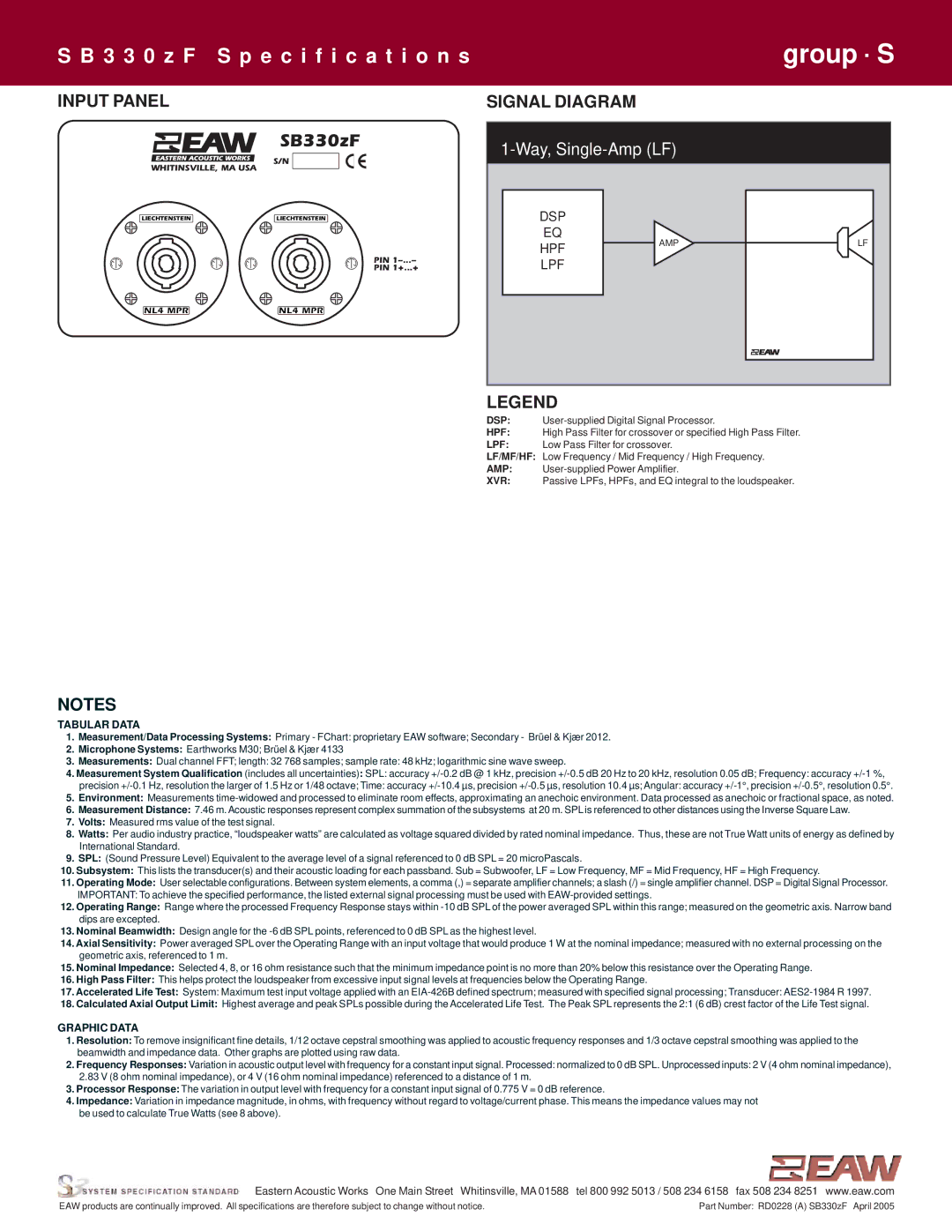SB330zF specifications
The EAW SB330zF is a high-performance subwoofer that stands out in the world of professional audio equipment. Renowned for its impressive sound output and advanced features, the SB330zF is designed to deliver deep bass and exceptional low-frequency performance, making it ideal for various live sound applications, including concerts, festivals, and corporate events.One of the main features of the SB330zF is its powerful dual 18-inch drivers. These high-efficiency woofers are engineered to handle significant power while providing an extended frequency response. This means that users can expect clear and impactful bass that resonates well in a variety of acoustical environments. The subwoofer’s robust wood construction ensures durability, enhancing its performance while minimizing unwanted resonance.
The SB330zF utilizes advanced technologies to optimize its acoustic output. One notable technology is the proprietary Waveguide design, which helps to direct the sound precisely where it is needed, allowing for a more focused and cohesive audio experience. This feature is particularly beneficial in large venues where sound clarity is essential for audience engagement.
In terms of connectivity, the EAW SB330zF is equipped with versatile input options, including both analog and digital connectivity, allowing for seamless integration with various sound systems. The onboard processing capabilities offer users an array of presets to tailor the sound according to the specific requirements of the event, ensuring optimal performance regardless of the setting.
Another key characteristic of the SB330zF is its efficient heat dissipation system. This system prevents overheating during extended use, allowing users to push the subwoofer to its limits without compromising performance. The SB330zF is also designed with user-friendly rigging options, making it easy to stack or fly the subwoofer in a variety of configurations, ensuring versatility in deployment.
Overall, the EAW SB330zF is a remarkable subwoofer that combines cutting-edge technology with practical features tailored for professional audio applications. Its powerful performance, robust build quality, and user-centric design make it an ideal choice for audio professionals looking to enhance their sound systems with exceptional low-frequency capabilities. With the SB330zF, audiences can expect a deep, resonant bass experience that elevates live performances to new heights.

